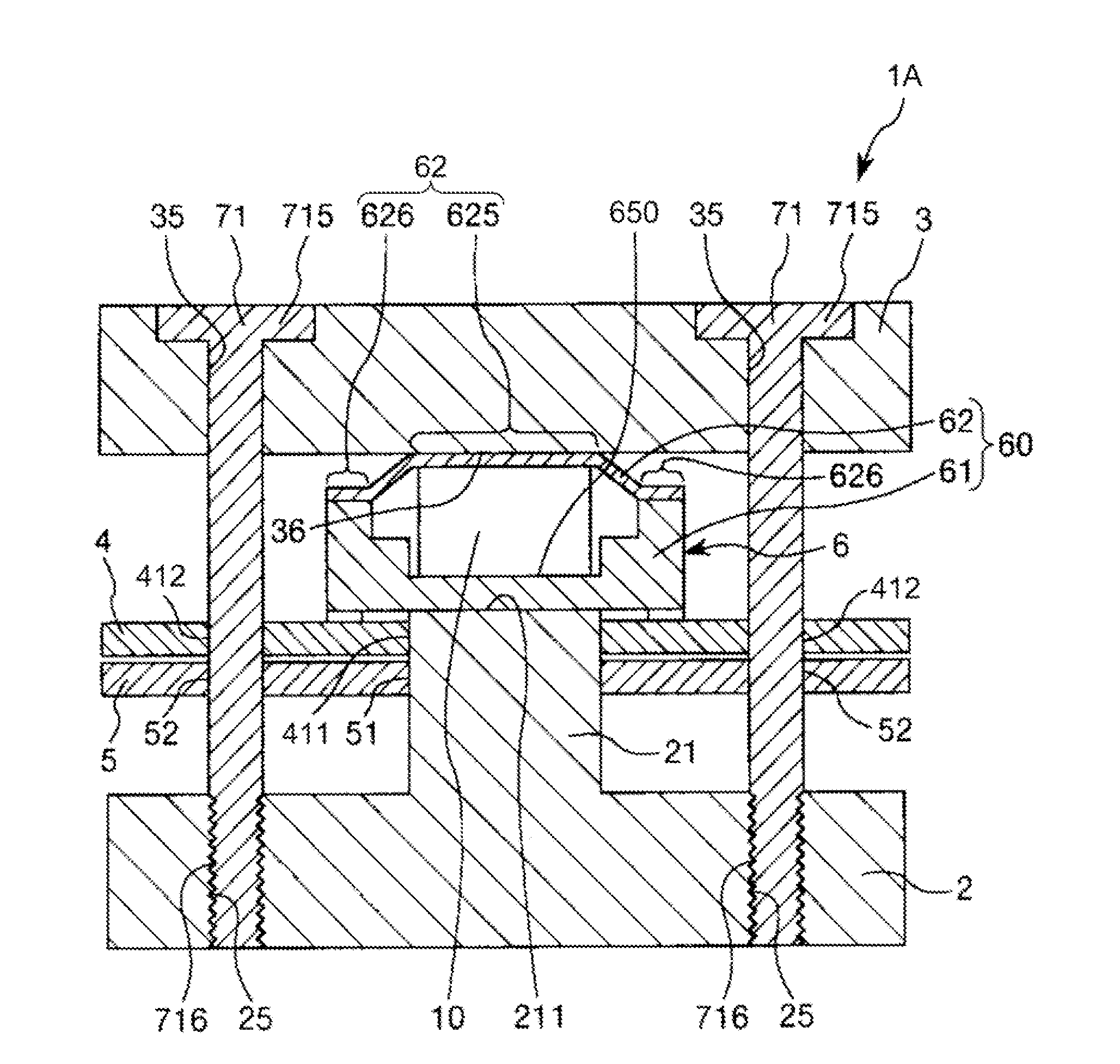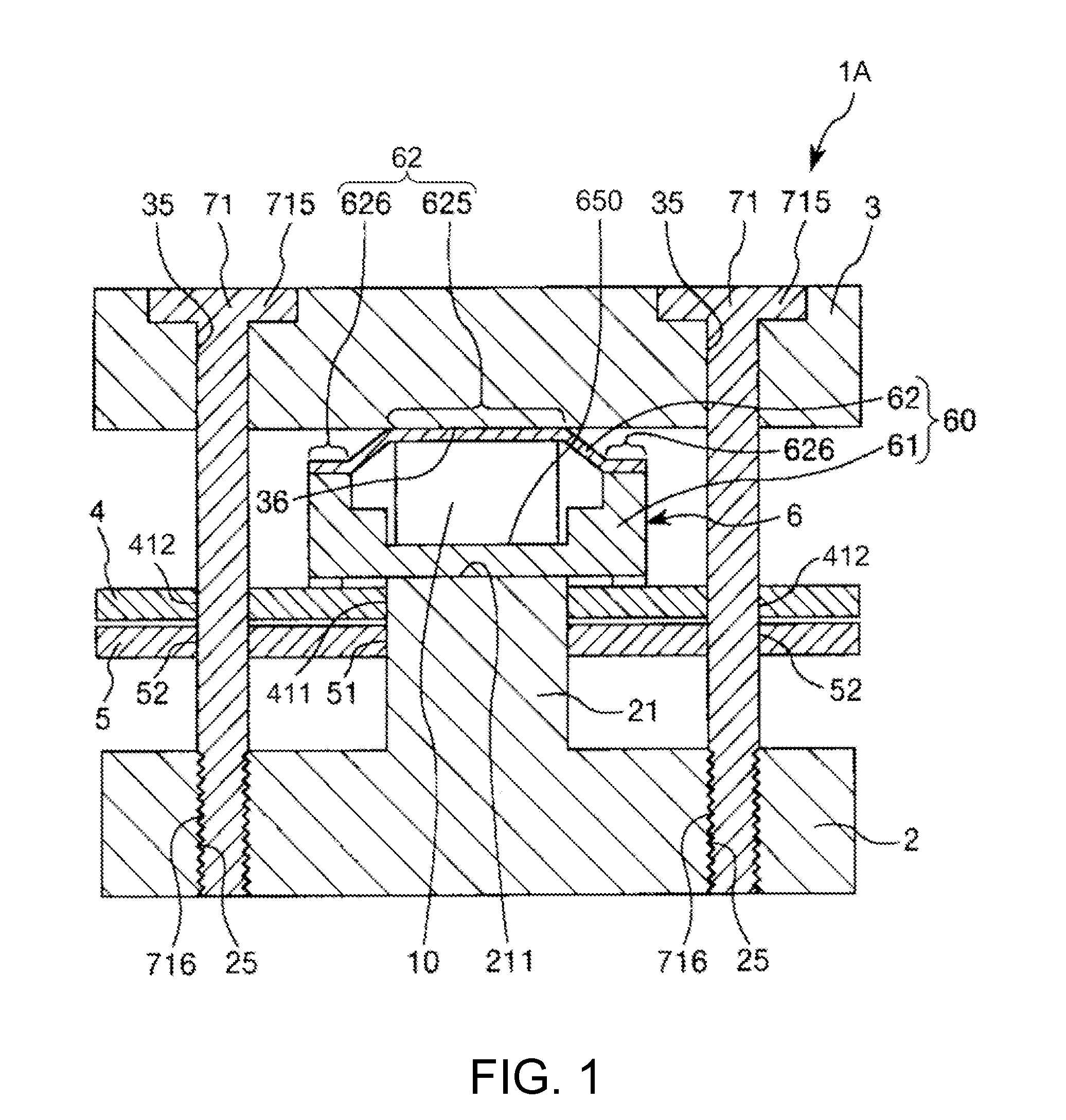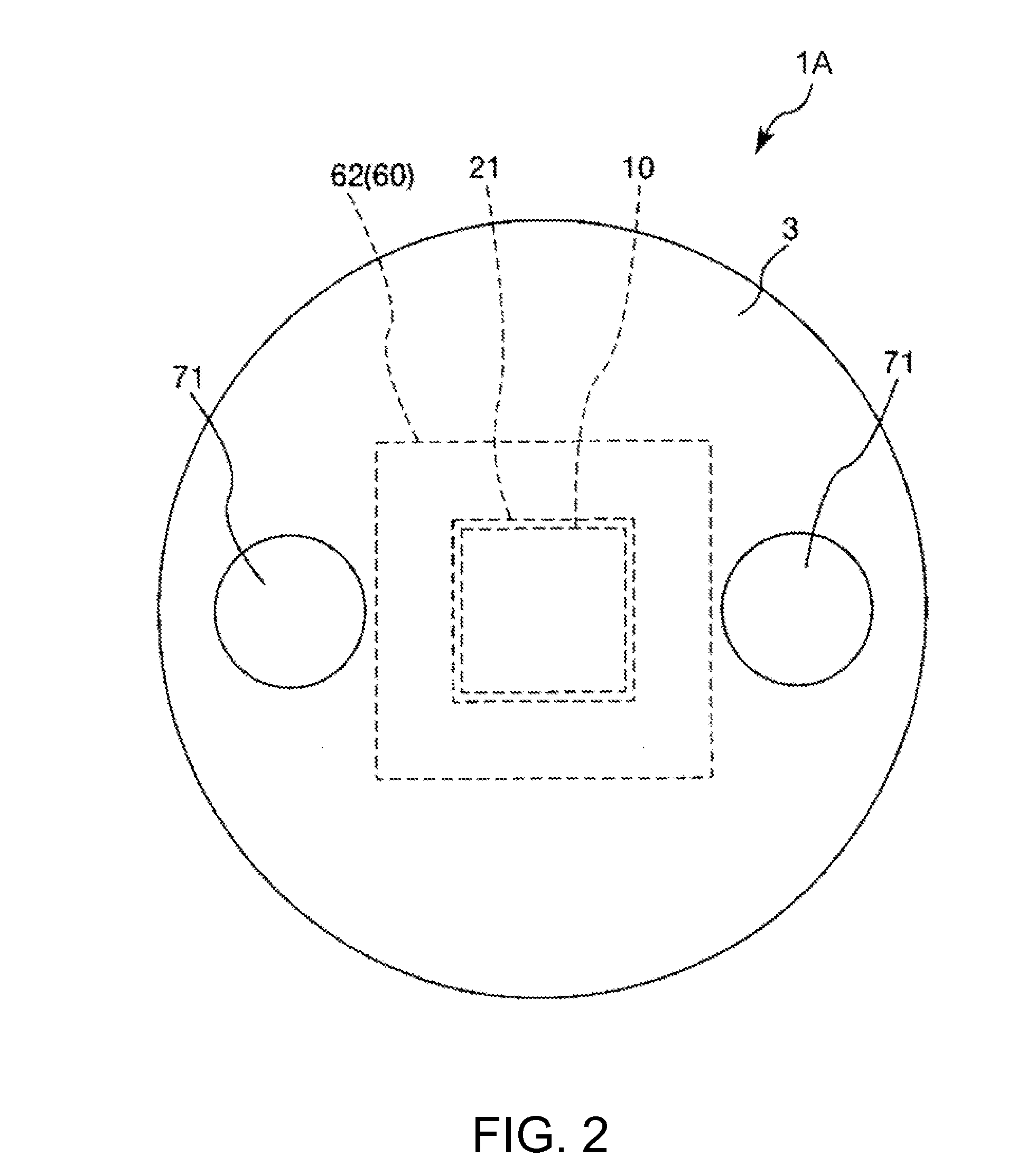Sensor device, force detecting device, robot, electronic component conveying apparatus, electronic component inspecting apparatus, and component machining apparatus
a technology of force detection and sensor device, which is applied in the direction of apparatus for force/torque/work measurement, programme control, instruments, etc., can solve the problems of wire rupture, conductive paste rupture (disconnection) by stress, and insufficient electrical connection of internal electrodes to wires, etc., to accurately detect external forces, properly perform work, and reduce the likelihood of connection failure
- Summary
- Abstract
- Description
- Claims
- Application Information
AI Technical Summary
Benefits of technology
Problems solved by technology
Method used
Image
Examples
first embodiment
[0079]FIG. 1 is a sectional view showing a force detecting device (a sensor device) in a first embodiment of the invention. FIG. 2 is a plan view of the force detecting device shown in FIG. 1. FIG. 3 is a circuit diagram schematically showing the force detecting device shown in FIG. 1. FIG. 4 is a sectional view schematically showing a charge output element of the force detecting device shown in FIG. 1. FIGS. 5A and 5B are plan views showing an electrode layer of the charge output element shown in FIG. 1. FIGS. 6A and 6B are plan views showing the electrode layer and a ground electrode layer of the charge output element shown in FIG. 1, wherein FIG. 6A is a plan view showing the electrode layer and FIG. 6B is a plan view showing the ground layer. FIG. 7 is a sectional view showing the sensor device shown in FIG. 1. FIG. 8 is a diagram of the sensor device viewed from an arrow A1 direction in FIG. 7.
[0080]Note that, in the following explanation, for convenience of explanation, the up...
second embodiment
[0168]FIG. 9 is a plan view showing a force detecting device in a second embodiment of the invention. FIG. 10 is a sectional view taken along line G-G in FIG. 9. FIG. 11 is a circuit diagram schematically showing the force detecting device shown in FIG. 9.
[0169]Differences of the second embodiment from the first embodiment are mainly explained below. Explanation of similarities is omitted.
Overview of the Force Detecting Device
[0170]A force detecting device 1B in the second embodiment shown in FIGS. 9 and 10 has a function of detecting an external force (including a moment), that is, a function of detecting six axial forces (translational force components (shearing forces) in x, y, and z-axis directions and rotational force components (moments) about x, y, and z axes).
[0171]As shown in FIGS. 9 and 10, the force detecting device 1B includes four sensor devices 6 and four pressurizing bolts 71. The positions of the sensor devices 6 are not particularly limited. However, in this embodim...
third embodiment
[0186]FIG. 12 is a sectional view showing a force detecting device in a third embodiment of the invention. FIG. 13 is a plan view of the force detecting device shown in FIG. 12. FIG. 14 is a circuit diagram schematically showing the force detecting device shown in FIG. 12. FIG. 15 is a sectional view schematically showing a charge output element included in the force detecting device shown in FIG. 12. FIG. 16 is a schematic diagram showing an action state of a force detected by the charge output element of the force detecting device shown in FIG. 12. FIG. 17 is a diagram of the charge output element viewed from an arrow D direction in FIG. 16. FIG. 18 is a partially enlarged detailed view of the vicinity of the charge output element of the force detecting device shown in FIG. 12. FIG. 19 is a plan view of the charge output element shown in FIG. 18.
[0187]Note that, in the following explanation, the upper side in FIG. 12 is referred to as “up” or “upward” and the lower side in the fig...
PUM
 Login to View More
Login to View More Abstract
Description
Claims
Application Information
 Login to View More
Login to View More - R&D
- Intellectual Property
- Life Sciences
- Materials
- Tech Scout
- Unparalleled Data Quality
- Higher Quality Content
- 60% Fewer Hallucinations
Browse by: Latest US Patents, China's latest patents, Technical Efficacy Thesaurus, Application Domain, Technology Topic, Popular Technical Reports.
© 2025 PatSnap. All rights reserved.Legal|Privacy policy|Modern Slavery Act Transparency Statement|Sitemap|About US| Contact US: help@patsnap.com



